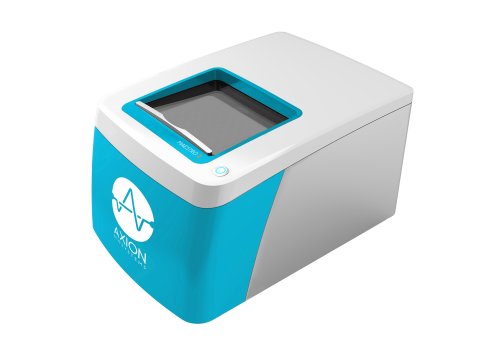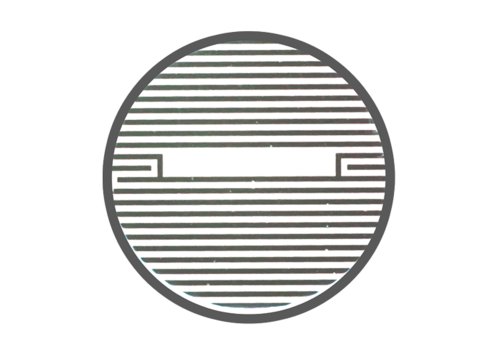What you will learn in this 11-minute webinar:
- >> About the challenges of cisplatin-resistant testicular germ cell tumors.
- >> How novel therapeutic compounds and combination therapies are screened and evaluated for the treatment of cisplatin-resistant testicular germ cells.
- >> How the Maestro Z impedance assay sensitively measures real-time cytotoxicity to quickly validate compounds identified by high-throughput screening.
About the presenter:

Lucia Kucerova, PhD
Comenius University Medical Faculty and Cancer Research Institute of Biomedical Research Center
Bratislava, Slovakia
Dr. Lucia Kucerova completed her PhD at Comenius University, where she studied the exploitation of cellular therapies in the treatment of solid tumors and the role of the tumor microenvironment in chemo resistance.
Transcript of the webinar:
Host: Thank you for joining our Coffee Break webinar.
Testicular germ cell tumors represent the most common malignancy in men between 20 and 40 years of age. While cisplatin-based chemotherapy has been a highly effective therapeutic approach, about 5-15% of patients develop recurrent chemo-resistant malignancies.
In this webinar, Dr. Kucerova discusses her translational research into novel combination treatments for cisplatin-resistant testicular germ cell tumors.
Dr. Lucia Kucerova completed her PhD at Comenius University, where she studied the exploitation of cellular therapies in the treatment of solid tumors and the role of the tumor microenvironment in chemo resistance. In her current role at the Comenius University Medical Faculty and Cancer Research Institute of Biomedical Research Center in Bratislava, she is investigating novel combination treatments to treat refractory testicular germ cell tumors.
Dr. Lucia Kucerova: Good morning, everybody. Thank you very much for the introduction. I would like to show you how we at the Translational Research Unit execute our translational research. We are trying to apply basic research into clinical practice, and we also work on experimental approaches used to solve some clinical questions.
We are focusing on overcoming chemo resistance to cisplatin in testicular germ cell tumors, and this has been a research focus of the Translational Research Unit for over 10 years.
As you know, platinum-based chemotherapy is prescribed to many cancer patients. It's 10 to 20% of different types of cancer which are being treated with cisplatin regimens. However, there are multiple mechanisms by which cells acquire cisplatin resistance, and they are either pre-target, on-target, post-target, or involve other types of cell cycle arrest, autophagy, or the microenvironment, which enable the cancer cells to escape cisplatin chemotherapy toxicity.
It still remains challenging to overcome acquired resistance to chemotherapy. Perhaps you know that testicular germ cell tumors are exceptionally sensitive to this type of chemo. However, some patients recur with chemo-resistant disease, and we are trying to find approaches either for single therapy, monotherapy, or combination therapy to achieve some amelioration or overcoming resistance or refractoriness of these types of tumors in preclinical settings and in clinical studies.
So far, it's been achieved with limited success. That’s why we’re trying to test new compounds and new combinations of compounds to achieve our goal. I would like to show you that we actually use multiple model cell lines. Even though this disease is a rare cancer, there are multiple cell lines available, and we have derived our own models of acquired cisplatin resistance. So, we can actually test our hypotheses on all histological subtypes of the testicular germ cell tumors.
Now, in order to find new drug combinations, we have performed high throughput screening. We have tested 24 different compounds which are already at the clinical stage. We then tested these compounds in several different concentrations, either in monotherapy or in combination with cisplatin, with the idea that we could achieve either additive or synergistic effects to kill the cancer cells.
As a next step, we use different platforms to validate the results of high throughput screening, one of them being a real-time [Maestro Z] impedance platform. The major advantage of this platform is its rapid implementation. Because it’s a label-free method, it’s suitable for our adherent cells and, as you can see, it can be multiplexed with endpoint luminous measurement of relative viability.
We combine these methods also with kinetic real-time luminescence measurement independently. Additionally, where we have specifically labeled cells with a nuclear fluorescent label, we can use real-time image-based analysis and combine it with the endpoint luminescent analysis to confirm the additive or synergistic effects of the selective drugs.
As you can see here in this example, we quickly implemented impedance-based evaluation of cisplatin cytotoxicity. This illustration uses our ovary and York septum cell line directly in the impedance-based platform, showing the growth curve over 72 hours and the inhibitory effect demonstrated by decreasing impedance at various concentrations of cisplatin.
You can see on the right-hand side that the results can be exported either as impedance and decrease of impedance or they can be calculated as a percent of cytolysis. In the lower panel on the right, you can see that using this method, we confirmed the IC50 for cisplatin for this line, being about 1.6 micrograms per milliliter of cisplatin, which corresponds nicely to the viability data measured by relative viability.
The impedance-based platform helps us overcome some difficulties we observed with our cell lines that are not suitable for image-based analysis. Such an example is the cell line representative of seminoma. It's broadly used as a model of testicular cancer. However, as you can see in the images, the cells are very transparent, and very low fluorescent label intensity can be observed, so the readout is not reliable when determining sensitivity.
However, when we took these cells to the impedance-based platform, the resistance is very clear, and the proliferation is really obvious here as a nice increase in impedance. We were also able to see a very quick effect of the HSP 90 inhibitor at various concentrations. This cell line, for example, is very sensitive to monotherapy with this inhibitor, and the combination therapy did not significantly increase cytotoxic efficacy. Therefore, we think that this type of treatment is suitable to be used in monotherapy.
I'd like to show you the combinations we have used: a small molecular inhibitor in combination with cisplatin. In this case, we chose a representative cell line for embryonal carcinoma, which is a chemo-resistant variant. As you can see, the increasing concentration of the small molecular inhibitor decreases the viability of the cells and increases cytolysis, as indicated by the increasing intensity of the yellow color. Increasing concentrations of cisplatin also decrease viability.
However, the combination of the two, as you can see in the lower part of the right-hand side, is highly cytotoxic. The combination of these two compounds is very efficient in inducing strong cytolysis in this chemo-resistant cell line representative of embryonic carcinoma to confirm which combinations are suitable for further preclinical testing and evaluation in the next steps.
Thank you very much for your attention.
Host: That concludes today's Coffee Break webinar. If you have any questions regarding the research presented, or if you are interested in presenting your own research with microelectrode array technology or impedance-based assays, please forward them to coffeebreak@axionbio.com.
Thank you for joining today's Coffee Break webinar, and we look forward to seeing you again.


